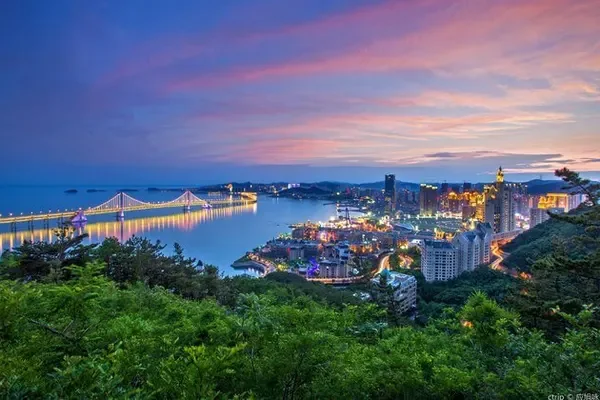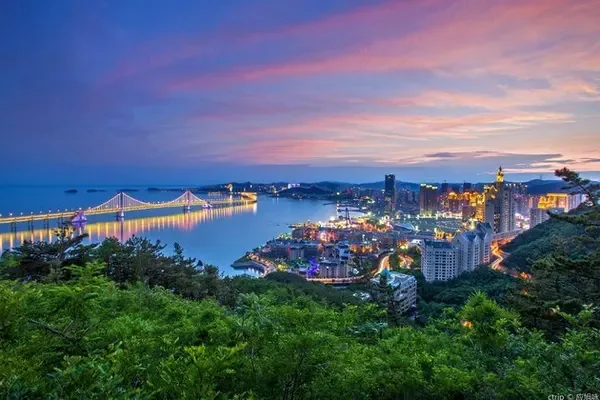From the map, the shortest distance between Pumo Yongcuo and Yamdrok Yongcuo is only 20KM, but how many people have been hindered by this 20KM? People who go to Tibet may seldom notice this snow-covered holy lake, because they all go to Namtso, Manasarovar, and Yamdrok, so that they ignore this one that is closer to Yamdrok. lake.

The navigation shows that starting from Lhasa, it takes about 5 hours to walk through the Airport Expressway, Provincial Highway 307, and Suse Line to get close to it. Pumoyongcuo, located at the junction of Luozha County and Langkazi County in Shannan Region, lies quietly in the arms of mountains. Some people say that Yamdrok Yongcuo is her sister lake, because Pumoyongcuo was formed from the lake The ice and snow in Lagangri melt water, and there is a tributary flowing into Yamdrok Yongcuo in the east of Pumoyongcuo, so there is still some "blood" relationship between the two.

Junjun remembers that the first time he noticed Pumoyongcuo was because of a documentary. At that time, the documentary told such a story: There is a small village on the east bank of Pumoyongcuo. The villages built here are inhabited by villagers all the year round. They rely on mountains to eat mountains and water, and rely on grazing for a living. The green grass by the lake in summer can make the flocks fat and strong, but once the winter comes, or even before winter, the flocks with withered vegetation will rely on the forage stored by the shepherd to survive the winter, but the forage is not enough to support them at all. The flock spends the long winter here.

So when blue ice forms on the surface of Pumoyongcuo Lake, the migration journey of herdsmen and sheep is ready to begin, which the locals call transition. The sheep will live on the island in the lake for more than 20 days. During these 20 days, they will have enough to eat, and more lives will also be born. This is a very united village. They regard the transition as the top priority of the whole village. Some villagers will go to the small island from time to time to see the living conditions of the flock, and then they will go to the island when the Tibetan New Year is coming. The flock came back.

In order to prevent the sheep from slipping, every household gathers ash and sprinkles a road of life on the night before the sheep return. There is a guide in front of the sheep, and dozens of "bodyguards" around them. They have to help the slipped sheep to stand up, and they also hold the newly born lambs.

In this snow-covered plateau, humans and animals grow and survive with mutual help.
Jun Jun’s first impression of Pumo Yongcuo came from “the continuation of life”. Later, as more and more backpackers entered Tibet, more and more beauties were discovered by them, including Pumo Yongcuo "Blue Ice". They said that it has a blue color comparable to that of Lake Baikal. What does the blue color of Lake Baikal look like? Let's see a picture.

Let’s have another piece of ice from Pumo Yongcuo, let’s have a look.

How about it, don't you feel a little bit on par?
So Junjun went to appreciate the beauty of Pumoyongcuo in summer and winter respectively. When the heat in the mainland was hot and sweaty, I left once again. The last time I took the Qinghai-Tibet line from Dunhuang and drove to Lhasa. This time the plane went directly to Lhasa, because I still have some experience of entering Tibet, so I don’t worry about the high reaction if I fly directly. I happened to follow my own tour group on a Kuragang day hiking tour, because the itinerary included the lake I wanted to see. Legend has it that the lake was once blessed by Guru Rinpoche, which gave it a sacred aura. Breeze, oh no, the wind here is a bit strong at this time, and it can't be described in micro words at all. The lake surface is like waves beating against the shore, but it feels very quiet listening to the sound of wind and water.

To get here, we have to pass by Yamdrok Yongcuo first. When we came out of Lhasa, we saw a lot of tourist buses and self-driving vehicles. However, after saying goodbye to Yamdrok Yongcuo, the number of vehicles in the same company immediately decreased. When we arrived at Pumo Yongcuo By the lake, the number of tourists can be seen everywhere, and there are no more than a dozen people in groups.

The winter when I came back from hiking happened to be the off-season for traveling in Tibetan areas. The company decided to explore new scenic spots in the south of the mountain, so I once again came to this place with an altitude of more than 5,000. Here is a pure paradise, everything is covered in silver, there is still some snow on the shore, and the lake in the distance is shining brightly under the sunlight. It was a blue ice surface, and there were cracks in the ice layer, like a blue dream catcher, which caught my steps and my thoughts. People who come here either lie down on the ice and look at the sky, or make a concave shape on the ice, lying down and getting up.



This lake, famous for its ice, brings joy to tourists in this cold winter and provides life support for the herdsmen and sheep that have lived here for generations.

